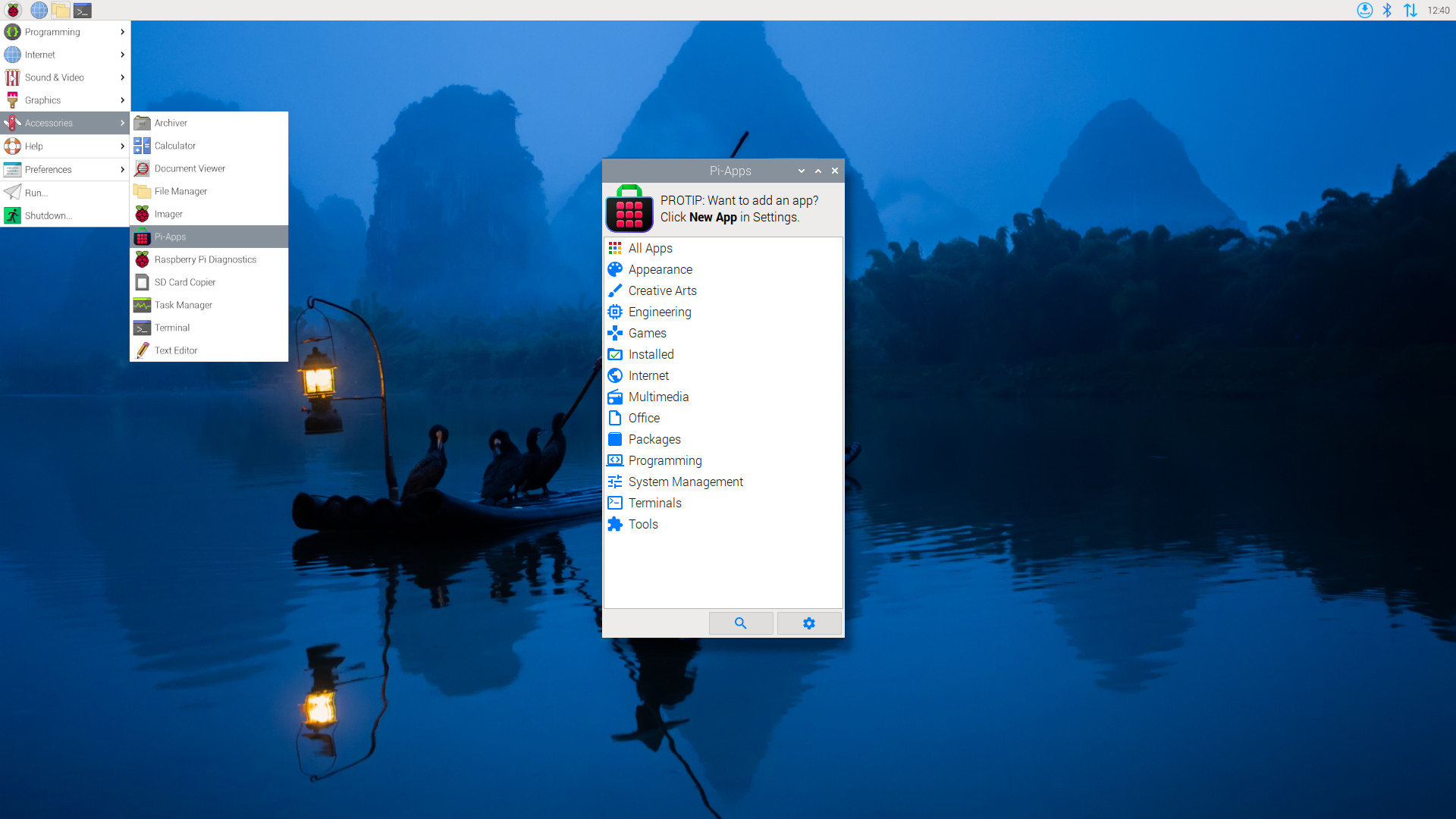Managing a fleet of Raspberry Pi downloads might sound intimidating, but with the right tools and strategies, it's actually simpler than you think. If you're diving into the world of IoT (Internet of Things) or just looking to expand your tech setup, knowing how to manage multiple Raspberry Pi devices is essential. Whether you're running a small home network or a large-scale deployment, this guide will help you get started.
Picture this: you’ve got a bunch of Raspberry Pi units scattered around, each performing different tasks. One’s monitoring temperature, another’s running a media server, and a third is controlling smart home devices. Now, imagine trying to keep track of all these devices, updating their software, and ensuring they’re secure. Sounds chaotic, right? Well, it doesn’t have to be.
In this article, we'll explore how to manage a fleet of Raspberry Pi downloads efficiently. From setting up a centralized management system to automating updates and backups, we’ve got you covered. So, grab a cup of coffee, and let’s dive in!
- Hdhub4u Bollyflix Movies Download Your Ultimate Guide To Streaming And Downloading Movies
- Hindi Movie Download Website Your Ultimate Guide To2151227861 Streaming And Downloads
Table of Contents
- Introduction to Fleet Management
- What is Raspberry Pi?
- Tools You Need to Manage a Fleet
- Setting Up Your Fleet
- Managing Software Downloads
- Automating Updates and Backups
- Ensuring Security for Your Fleet
- Common Issues and Troubleshooting
- Scaling Your Fleet
- Best Practices for Managing Raspberry Pi Downloads
- Conclusion
Introduction to Fleet Management
Managing a fleet of Raspberry Pi downloads is more than just plugging in devices and hoping for the best. It’s about creating a system that allows you to control, monitor, and update multiple devices from a single location. This is especially important if you're dealing with more than just a couple of Pis.
Let’s break it down: imagine having 10 Raspberry Pi units spread across different locations. You want to ensure they’re all running the latest software, but you also need to monitor their performance and troubleshoot any issues that arise. Without a proper management system, this can quickly become overwhelming.
Why Is Fleet Management Important?
Fleet management isn’t just about convenience; it’s about efficiency and security. By centralizing your control over multiple Raspberry Pi devices, you can:
- Hdhub 4uin Your Ultimate Destination For Highquality Movies
- Aditya Roy Kapoor Father Name Unveiling The Legacy Of A Bollywood Powerhouse
- Automate updates to save time.
- Monitor performance metrics in real-time.
- Ensure all devices are secure against potential threats.
- Scale your setup easily as your needs grow.
What is Raspberry Pi?
Before we dive deeper into managing a fleet of Raspberry Pi downloads, let’s quickly recap what Raspberry Pi actually is. For those who aren’t familiar, Raspberry Pi is a series of small single-board computers developed by the Raspberry Pi Foundation. These little devices are incredibly versatile and can be used for everything from home automation to complex IoT projects.
Think of Raspberry Pi as the Swiss Army knife of tech. It’s compact, affordable, and powerful enough to handle a wide range of tasks. Whether you’re building a weather station, running a media center, or controlling smart home devices, Raspberry Pi has got you covered.
Tools You Need to Manage a Fleet
Now that we’ve established why fleet management is important, let’s talk about the tools you’ll need to make it happen. Managing a fleet of Raspberry Pi downloads requires a combination of hardware and software solutions. Here’s a quick rundown:
Hardware Requirements
- Raspberry Pi units (duh).
- Power supplies for each device.
- MicroSD cards for storage.
- Network connectivity (Wi-Fi or Ethernet).
Software Tools
- Raspberry Pi Imager: For installing operating systems on your microSD cards.
- Fleet Commander: A tool for managing multiple Raspberry Pi devices from a central location.
- Pi-Hole: For ad-blocking and DNS management across your network.
- Ansible: An automation tool that can help with software updates and configuration management.
Setting Up Your Fleet
Setting up a fleet of Raspberry Pi devices might seem daunting, but with the right approach, it’s a breeze. Here’s a step-by-step guide to get you started:
Step 1: Install the Operating System
Before you can manage your fleet, you’ll need to install an operating system on each Raspberry Pi unit. The easiest way to do this is by using the Raspberry Pi Imager tool. Simply download the tool, select the operating system you want to install, and flash it onto your microSD card.
Step 2: Configure Network Settings
Once your Raspberry Pi units are up and running, you’ll need to configure their network settings. This includes setting up Wi-Fi or Ethernet connections, assigning static IP addresses, and configuring DNS settings.
Step 3: Centralize Management
To manage your fleet efficiently, you’ll need a centralized management system. Tools like Fleet Commander or Ansible can help you automate tasks, monitor performance, and apply updates across all devices.
Managing Software Downloads
One of the key aspects of managing a fleet of Raspberry Pi downloads is ensuring that all devices are running the latest software. This not only improves performance but also enhances security. Here’s how you can manage software updates effectively:
Automate Updates
Manually updating each Raspberry Pi device can be time-consuming, especially if you have a large fleet. That’s where automation tools like Ansible come in. With Ansible, you can create playbooks that automatically update software on all devices in your fleet.
Monitor Software Versions
Keeping track of which devices are running which software versions can be challenging. Tools like Fleet Commander provide a dashboard that displays the status of each device, making it easy to identify outdated units.
Automating Updates and Backups
Automation is your best friend when it comes to managing a fleet of Raspberry Pi downloads. By automating updates and backups, you can save time and reduce the risk of human error.
Set Up Scheduled Backups
Backing up your Raspberry Pi devices is crucial, especially if you’re running important applications. Tools like rsync can be used to schedule regular backups of your devices, ensuring that you always have a recovery point in case something goes wrong.
Create Update Scripts
Writing custom update scripts can help you streamline the process of applying updates across your fleet. These scripts can be scheduled to run at specific intervals, ensuring that all devices are always up to date.
Ensuring Security for Your Fleet
Security should always be a top priority when managing a fleet of Raspberry Pi downloads. With so many devices connected to your network, there’s a higher risk of potential vulnerabilities. Here’s how you can keep your fleet secure:
Use Strong Passwords
One of the simplest yet most effective ways to enhance security is by using strong, unique passwords for each device. Avoid using default credentials and consider enabling two-factor authentication (2FA) for added protection.
Regularly Update Software
As mentioned earlier, keeping your software up to date is crucial for maintaining security. Regular updates not only improve performance but also patch any known vulnerabilities.
Common Issues and Troubleshooting
Even with the best management tools in place, issues can still arise. Here are some common problems you might encounter when managing a fleet of Raspberry Pi downloads and how to troubleshoot them:
Device Connectivity Issues
If a device is unable to connect to your network, check its network settings and ensure that it has the correct Wi-Fi or Ethernet configuration. You might also want to verify that the device’s firmware is up to date.
Software Compatibility Problems
Occasionally, you might encounter issues with software compatibility. To resolve this, ensure that all devices are running the same version of the operating system and that any third-party software is compatible with your setup.
Scaling Your Fleet
As your needs grow, you might find yourself needing to expand your fleet of Raspberry Pi downloads. Scaling your setup doesn’t have to be complicated, especially if you’ve implemented a solid management system from the start.
Plan for Growth
Before adding new devices to your fleet, make sure your existing infrastructure can handle the additional load. This includes checking network capacity, storage requirements, and power supply.
Streamline Onboarding
Creating a standardized onboarding process for new devices can save you a lot of time. This might involve pre-configuring certain settings or using automation tools to quickly set up new units.
Best Practices for Managing Raspberry Pi Downloads
Managing a fleet of Raspberry Pi downloads requires a combination of technical skills and best practices. Here are a few tips to help you get the most out of your setup:
- Regularly review and update your management tools to ensure they’re meeting your needs.
- Document your processes and configurations to make troubleshooting easier.
- Stay informed about the latest developments in Raspberry Pi technology and adjust your setup accordingly.
Conclusion
Managing a fleet of Raspberry Pi downloads doesn’t have to be a headache. By implementing the right tools and strategies, you can create a streamlined system that allows you to control, monitor, and update multiple devices with ease. From automating updates to ensuring security, the key is to stay organized and proactive.
So, what are you waiting for? Get out there and start managing your fleet like a pro. And don’t forget to share your experiences and tips in the comments below. Who knows? You might just inspire someone else to take the plunge into the world of Raspberry Pi fleet management!
- Valvoline Coupon 25 Synthetic Oil Change Your Ultimate Guide To Savings And Car Care
- Movie Download The Ultimate Guide To Safely And Legally Enjoy Your Favorite Films


